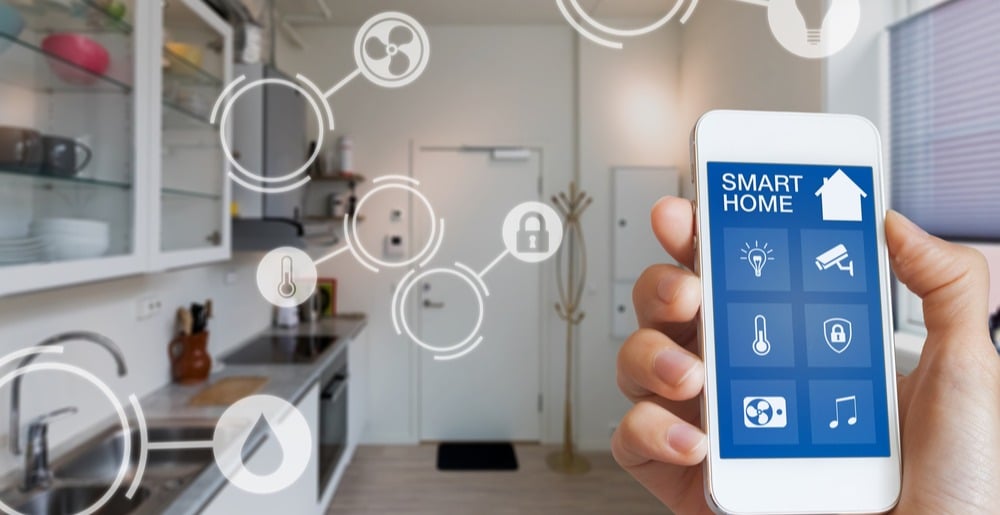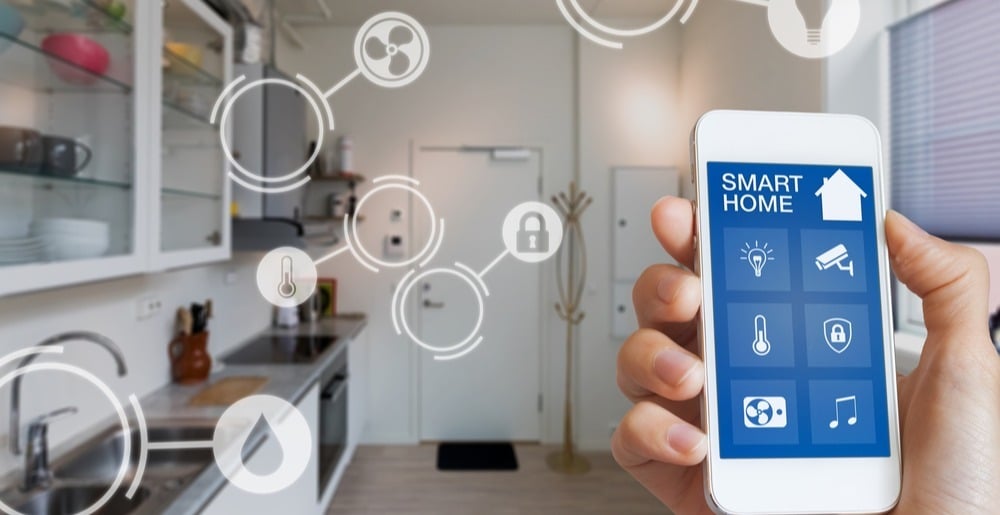Field Service Directors Can Ride the IoT Smart Home Technology Wave
Smart home technology is ubiquitous nowadays.An estimated one-third of American households now boast connected appliances, voice assistants, and...

The Internet of Things (IoT) is expanding at near light speed as the breadth of new smart home devices hits the market. It is estimated that there will be more than 63 million smart homes in the US within the next three years.
A smart home device is an electronic device that can be connected to a smart home system, automating tasks and/or allowing for remote access. Smart home devices allow homeowners to control appliances, thermostats, lights, and other devices using a smartphone, tablet, and more. Smart home devices also enable the field service industry to leverage predictive maintenance technology that facilitates a seamless and proactive appliance repair process without any equipment downtime.
While the array of available IoT smart home devices continues to grow, here are the top 20.
There are also home monitoring systems that alert homeowners of key safety issues such as power surges, water failures, and/or freezing pipes.
And there are smart hubs with which to connect and control it all.
In the past, when simple home devices or appliances needed fixing, many homeowners would talk to the department expert at their local home improvement store or seek out videos online. With a bit of patience, replacing a faucet, installing a doorbell, or replacing a thermostat could be done by the homeowner. Not so in the smart home.
Today, that faucet, doorbell, and thermostat are more than likely “smart” devices. When smart devices need maintenance, the average homeowner is less likely to attempt a do-it-yourself job than they are to reach out to OEMs or smart-home connectivity experts. They understand that attempting repairs on their own could lead to even more costly repairs in the long run on these sophisticated home gadgets.
This is where your field service organization can shine and take over a growing sector of customer demand: connecting, maintaining, and repairing smart home devices. Read on for five ways you can become a smart home expert to increase your profits and your field service market share.
Not to be confused with preventative maintenance, predictive maintenance solutions use IoT analytics and sensors to identify when a smart device is in need of service. More advanced solutions can reach out to a field service organization automatically while notifying the homeowner of the needed service. This is a massive competitive advantage for field service organizations that have predictive maintenance tools and software necessary to handle these types of sophisticated solutions.
It doesn’t stop there. Technology is continually evolving as more advanced devices enter the market. Technicians must also continually upgrade their skill set and knowledge to service an evolving market.
PCMag suggests it’s best that homeowners start with just one or two devices and then gradually add additional devices over time. When helping homeowners set up a smart home, it is wise to suggest entry-level products that can be built upon, such as security systems that monitor doors and windows. Once comfortable with that system, they can add other features such as door locks, outdoor sensors, sirens, etc. As homeowners expand their smart home systems, they should consider a “hub” that allows them to connect and control all the devices with a single tool. PCMag provides several options but suggests those that have the widest compatibility are best.
In order to dominate the market and optimize smart home management, your team must be flush with predictive maintenance options.
Smart device manufacturers are releasing new versions of their products and new products to connect with existing mainstays at a dizzying pace. In 2018 alone, Amazon released 12 new Alexa-based products (including a microwave that communicates with Echo devices) plus major Alexa software updates. That’s not even touching on the smart-home connectivity of many everyday appliances and the potential software and hardware updates (or failures) that these devices will bring to your customers.
Part of your field technicians’ work is to help devices function in a connected environment that contains devices that don’t easily talk to each other. Technicians aren’t just replacing a thermostat; they’re servicing an environmental control system. They’re not just installing a doorbell camera; they’re servicing a connected home security system. They’re not just repairing a soundbar; they’re servicing a home theater system.
The bottom line is that service technicians—employed or contracted—will require not just product knowledge but excellent overall logic and savvy on technology and connected systems.
Connected technology and smart devices are evolving faster every year and require more updates and maintenance as they go. Take advantage of this niche market and train field service technicians so your profits can expand with the growing technological web that is being cast through smart home connectivity.
How can field service organizations create and maintain an agile, predictive maintenance service offering that can handle the level of knowledge necessary for the IoT? The answer is the dynamic duo of the right software and blended workforce management.
Leveraging a mixed workforce is critical to your expansion in the smart home connectivity field service market. Contractor management services help field service organizations with credentialing, ranking, onboarding, and paying contracted technicians. This type of service makes it easier to scale your workforce as needs demand. Analysis tools provide performance and cost tracking to ensure you’re getting the most return on your investment. Customer surveys help identify those contractors that provide the best first-time fix rates and customer service excellence.
An article in PCMag states, “With so many different products in so many ecosystems, building a smart home can feel like an overwhelming logic puzzle.” The same can be said for servicing those ecosystems.
It’s rare—more likely impossible—that a smart home consists of devices from a single company. And that’s a challenge for field service technicians because each system differs in hardware, operating systems, software, and apps. Most smart systems do not work together seamlessly, and many need an expert in that particular technology. This is where contracted experts on specific smart devices or device suites can be your customers’ heroes, arriving to fix just what needs to be set right with a very specialized set of skills.
When managing a mixed workforce, you need field service software that is meant to manage contractors and employees alike from a single pane. Deploying the right field service technician for each service job involves numerous decisions, such as:
Field service management software like mobile workforce management software and route optimization software allows organizations to optimize their strategic workforce management capabilities by automating these decisions.
Mobile workforce management software helps organizations better manage their hybrid workforce by ensuring the technicians with the right skills show up for the job. This software also provides real-time status updates on in-progress jobs, along with compliance reporting and metric monitoring.
Route optimization software provides geolocation data that assigns jobs based on the location of each technician. This helps ensure appointments are on time and that technicians have enough time to do the job.
Homeowners who have invested heavily in building their smart homes demand a higher level of service. They expect that the service technician will have in-depth knowledge of not just the individual device, but of the entire smart home connected system. Customers also expect greater control. Customer engagement tools provide this through an online self-service customer portal where they can enter information about the problem and choose their preferred appointment date and time. The portal also enables them to view their technician’s location and estimated time of arrival, which helps them arrange to be home without having to take half a day off work. Mobile field service software also elevates the customer experience by giving technicians the ability to take payment on-site, set up the next service appointment, or offer a customer warranty.
Learn how to improve customer retention in the field service industry. Explore how.

Smart home technology is ubiquitous nowadays.An estimated one-third of American households now boast connected appliances, voice assistants, and...

IoT PaaS Technology Accelerates Connected Home Strategy McLean, VA- ServicePower, Inc., a market leader in field service management solutions,...

If the 2019 Consumer Electronics Show is any indication, the “smart home” trend is just ramping up – all made possible by advanced interoperability,...